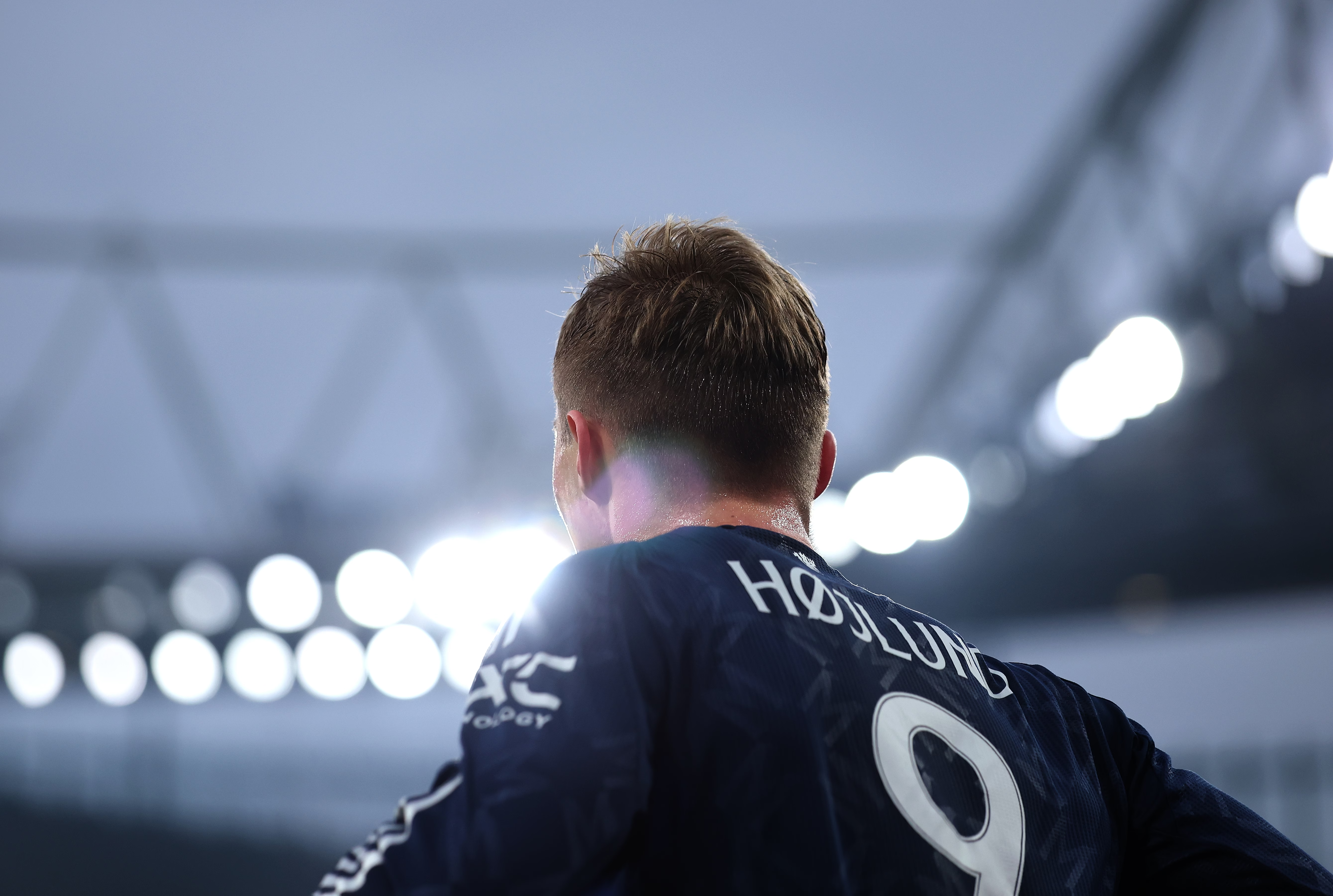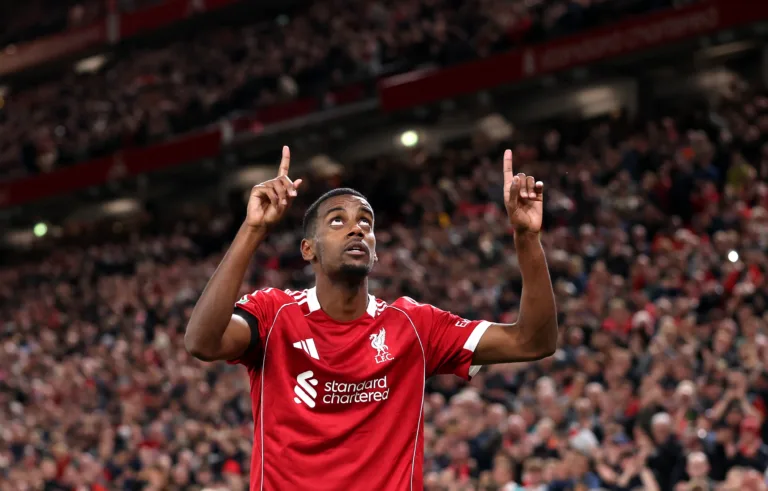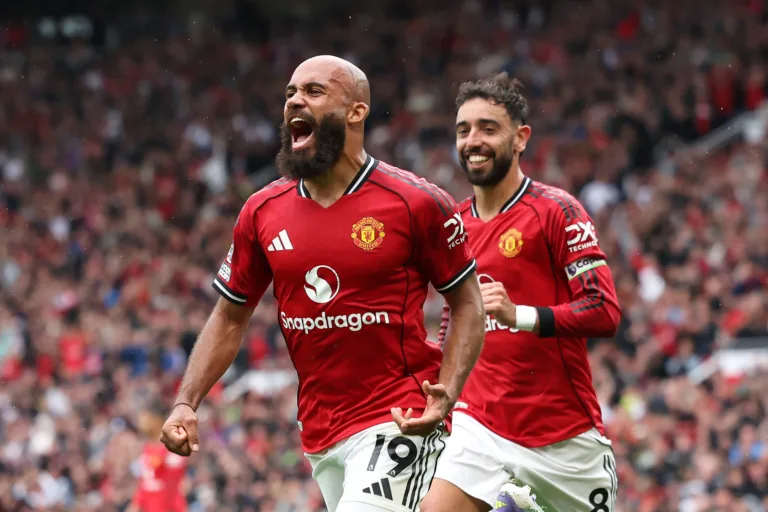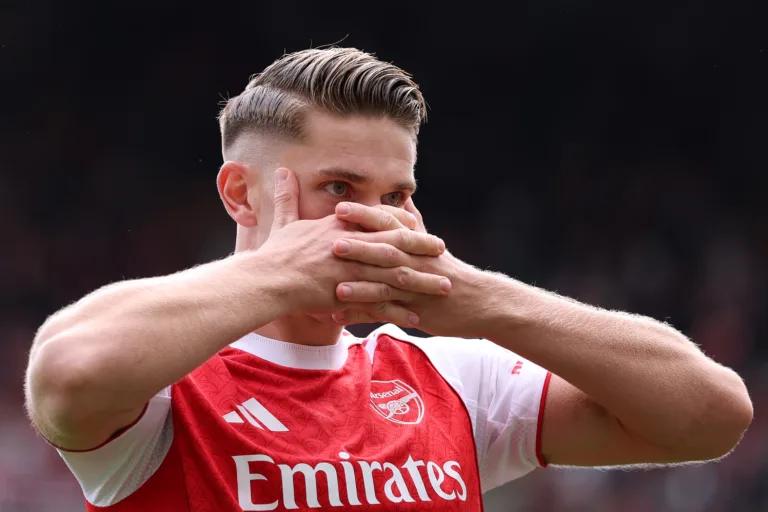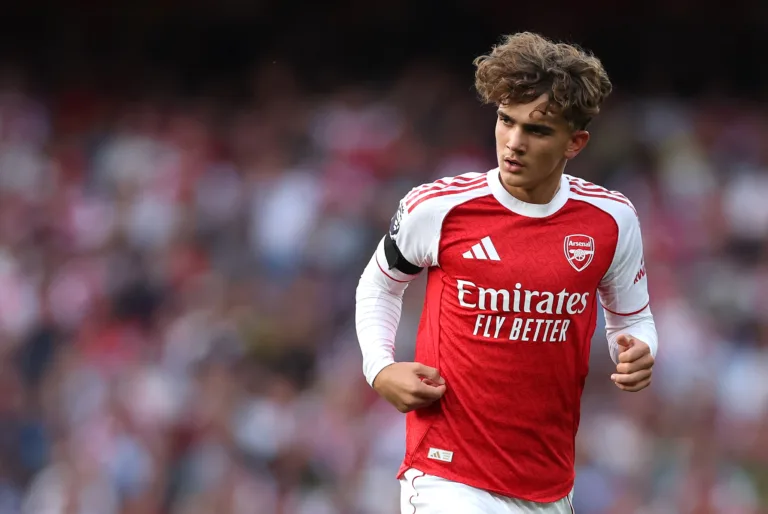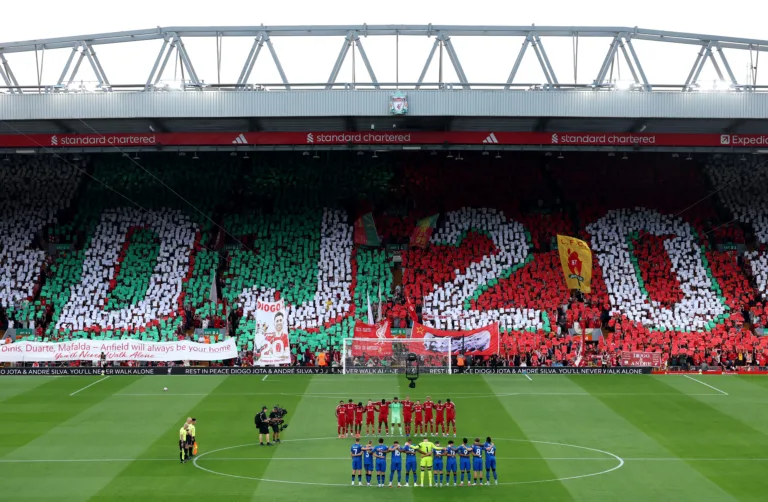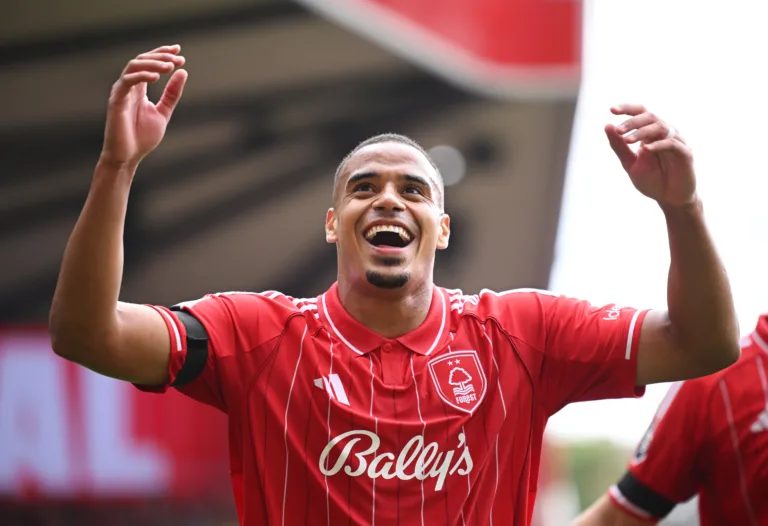Rasmus Hojlund Is Set To Stay at Manchester United, and Yes, He Can Still Be a Success
Rasmus Hojlund staying to fight for his place at Manchester United is a sign of his mentality, no matter what many want to believe about the young Danish forward. News has broken in recent hours that the former Atalanta striker is content to remain at the club he loved as a boy, despite the lure of some huge clubs in a league he previously looked comfortable in, the Serie A.
Inter Milan, this season’s Champions League finalists, and Juventus, one of the biggest clubs in Italy, have both registered an interest in bringing Hojlund into the club. But if reports are to be believed from England, Rasmus wants to ignore those flattering moves for his talents, which have begun to be hugely questioned during his time in the red of Manchester United.
‘Hojlund’ On
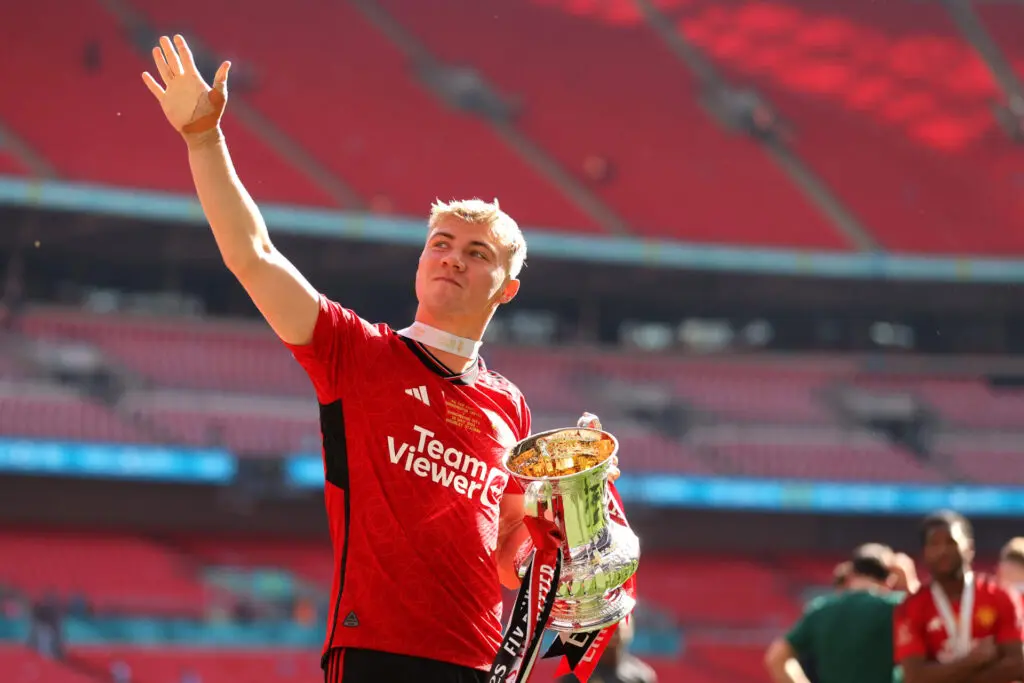
Unfortunately, Hojlund has experienced more periods of goal drought at United than periods of success. In defence of that statement, however, it’s also very fair to say the team he has played for has spent more time struggling as a unit than they have performed to the peak of their abilities. A centre-forward needs support and a functioning team behind him, particularly at such a young age. Can anyone name one time Rasmus Hojlund has had stability during his time at the club?
Failure to provide a platform for success and not having a senior pro in your position to look up to for guidance and lessons is a hard enough obstacle to juggle even at a club in the bottom half of the table. Factor in playing for the biggest club in England, in one of the most scrutinised positions on the planet as the centre forward of Manchester United, and you begin to understand the lonely figure the bright blue-eyed Dane with the prowling left foot can cut at times running around the fading grass at Old Trafford.
United’s biggest mistake over the last 12 years of recruitment has not just been signing the wrong players but, rather, at times, signing the correct players and failing to profile them in a manner that maximises their strengths and minimises their weaknesses. It feels like Rasmus is another example of this happening at the club.
Poor Platforming of Rasmus Hojlund
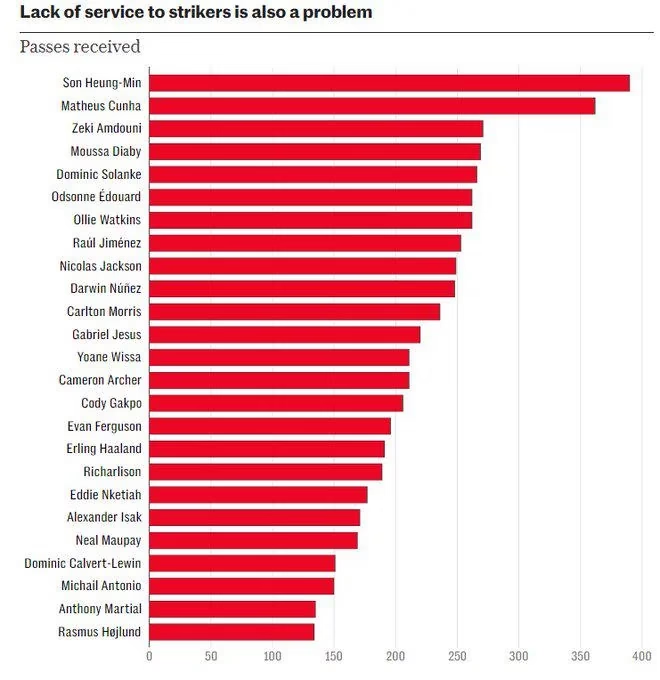
The decision to pay £72m inclusive of add-ons for a 20-year-old to lead the line for one of the biggest clubs alive and then proceed to give him little to no service for the first 8 months of his career can only be described as baffling, but then again, it was a Glazer-driven recruitment option, so it’s far from surprising. Hojlund received the least amount of passes into his feet from his team-mates in his first season at the club at one stage in the league, especially from Alejandro Garnacho and Antony, who continually struggled to find the centre-forward due to their ‘dribble first, think later’ style of wing play.
In fact, as of December 2023, Garnacho and Antony had played 450 minutes with Hojlund and only managed to pass the ball to him ELEVEN times. That just doesn’t happen in a team functioning at the right frequency, and you can’t seriously believe that Hojlund is that bad to only make himself available eleven times in 450 minutes for passes from those players.
Only Leicester, Southampton and Ipswich took fewer leads than Manchester United this season in the Premier League. As per Stefan Bienkowski, Hojlund’s touches in the box per 90 dropped 17% last season when compared with the season before under Erik ten Hag and 46% when compared with his time at Atalanta. Hojlund’s form has hugely mitigating circumstances, and a team shoehorned into the ideology of Ruben Amorim, albeit rightfully so, is one of the huge issues that sees Hojlund perform as poorly as he currently is for the club.
Football teams thrive off harmony and relationships. The fact of the matter is, if you watch Hojlund’s first season, you will see him make countless off-ball runs that were ignored by players sprinting right into another player instead of getting their head up and finding him. It seems like the trauma from making those runs has set into his muscle memory permanently, because not only is he making far less impressive runs this season when he gets the chance, it seems like he’s making no runs at all.
Every top player who’s thrived at United has had someone to learn from and grow with. Wayne Rooney had Ruud Van Nistelrooy. Cristiano Ronaldo had Ryan Giggs. The strikers played in teams that created for the striker as a collective unit. They performed as a cohesive team. During the majority of Rasmus’s period in red, he’s played alongside players who at times were in it for themselves, hellbent on creating their own goals instead of looking up and finding the Dane making runs inside the box to try and stick his team in the lead.
Part of the Blame

With that being said, of course Hojlund himself has to take the blame, particularly this season. He has stopped doing anything that once made him great. His hold-up is sluggish. His movement has become mediocre, and his once frighteningly accurate finishing, which was ranked ahead of Erling Haaland in his first season when you talk about conversion rates in the league, has become laboured and without conviction, a sign of a player lacking confidence. It seems so much like a player who is feeling the humongous pressure of this football club and has nobody to look to for guidance about how to handle that pressure.
In the age of social media, there are only truly two people Rasmus could look to as people who have been chewed up by the Manchester United machine but refused to be spat back out. Bruno Fernandes and Harry Maguire. Maguire in fact should serve as a model for Hojlund to emulate. The English defender’s public opinion among other fans was, at one stage, lower than any professional that has ever played for the club, with hundreds of articles a month and thousands of memes a week posted on the daily trying to drag down his reputation.
Maguire maintained his composure, focused on his work, and experienced one of the most exhilarating moments in the football club’s history against Lyon in May. This moment can serve as a starting point to show Rasmus that improvement is possible, even when it feels unlikely.
Diego Forlan went through a run like this at United, in fact, considerably worse. The Uruguayan went nine months, or 26 games, without a goal for the club. Forlán scored fewer goals (17) than Hojlund has (26) during his time at the club despite playing three more games. That was a Diego Forlan who went on to prove he was one of the most potent finishers of his generation in the years that followed leaving Manchester United. He struggled under the pressures of the Old Trafford faithful, and look at the leaders he had around him in the dressing room. Look at the football team he got to play with, and then ask yourself how he himself would look in this Manchester United team if he struggled so much in a Sir Alex Ferguson side glittered with stars from top to bottom.
This is not comparing Hojlund to Forlan but merely suggesting that better players have struggled in better teams and still went on to become incredibly talented forwards in their careers. Whether Rasmus achieves that at Manchester United remains uncertain, but he is determined to make a strong effort. At the end of the day, the potential and belief were high when he first came in. He scored five goals in six games in the Champions League for the club and became the youngest player in the club’s history to reach ten goals in Europe this season, beating a record previously held by Wayne Rooney.
Stats like that might not mean much, but it shows there is a player in there, regardless of the public execution his attributes and qualities have gone through in the eyes of the social media fan over the last nine months. Less than a year ago Transfermarkt valued Hojlund as the most valuable U21 player in the Premier League. If that same metric were to be measured now, he’d arguably rank as one of the lowest. Football is a fickle sport at times. Recency bias clouds the vision of people at times, but one thing’s for sure: if Hojlund continues to perform at the levels he did last year at the club, it will stop being recency bias and just plain and simply become reality.
Hojlund has to want to learn. He has to want to grow, and if he doesn’t evolve over this next season and return to something close to the player United signed in the summer of 2023, he will inevitably leave the club. But he should be given a chance to prove his worth, and if he can, United will have a centre-forward on their hands for the next decade.


